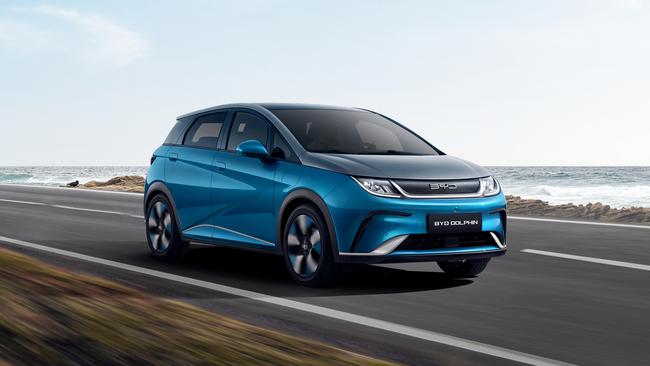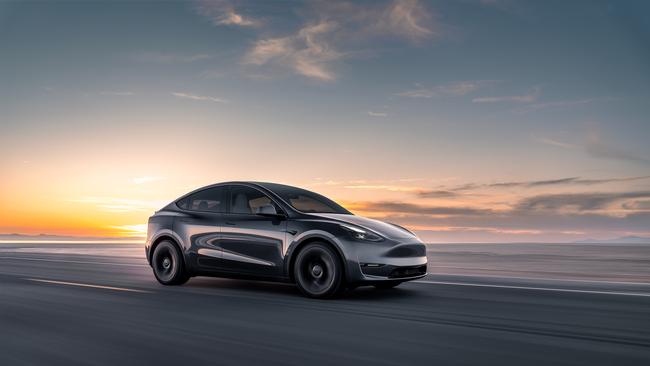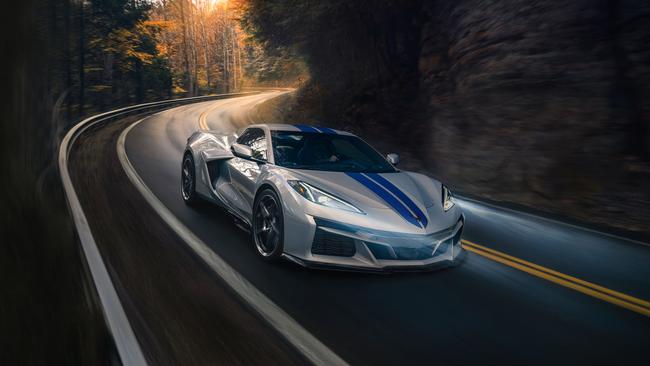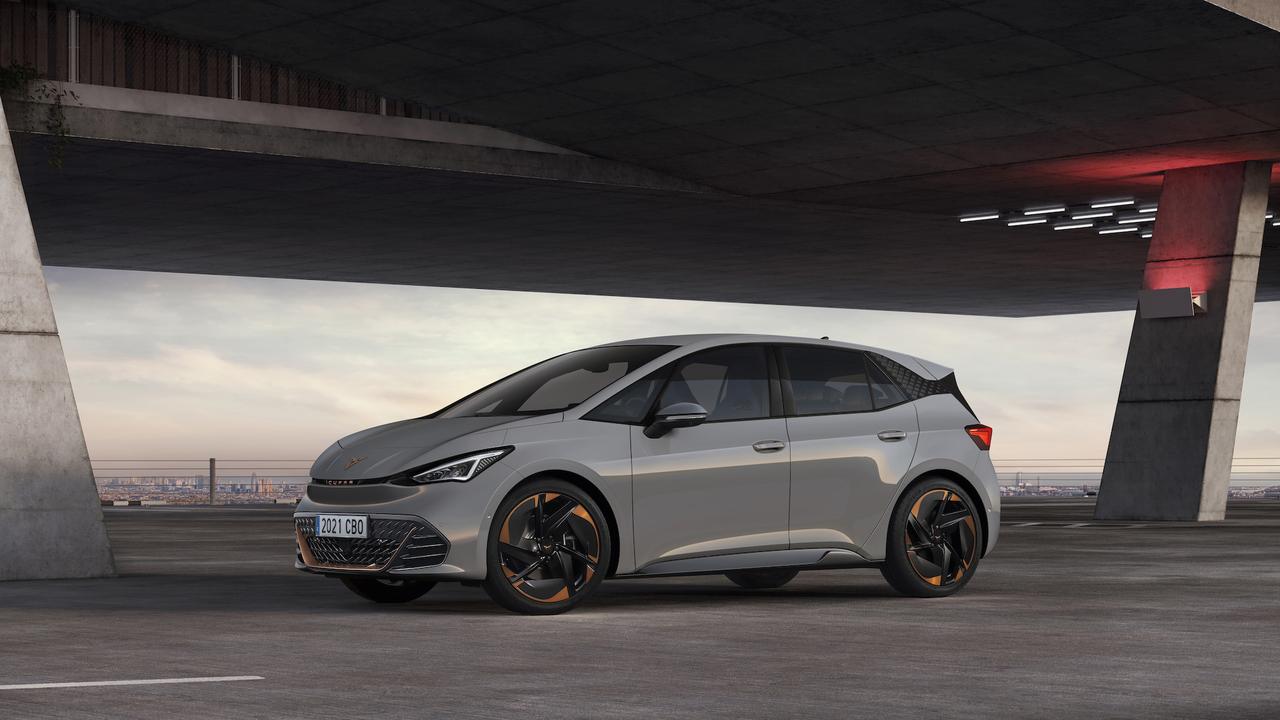States introduce new parking laws to stop EV ‘ICE-blocking’
‘ICE-blocking’, parking a combustion-engined car in an electric-vehicle charging spot, will soon land you in hot water with states across Australia introducing huge fines.

As electric-vehicle sales rise faster than public charging spots are made available, several state governments have stepped up to fight a rising conflict between drivers of EVs and petrol and diesel-powered cars and put an end to the insidious practice of “ICE-blocking”.
Parking a combustion-engined car in an electric-vehicle charging spot could land you with a huge fine, as an increasing number of states introduce laws to stop the practice. NSW, Victoria, Queensland and the ACT all have laws in place to deter those in petrol or diesel-powered cars taking an EV charging bay.
The practice, known as “ICE-ing” or “ICE-blocking“ – in reference to the acronym for an internal-combustion-engined vehicle – is an increasing problem in Australia as EV sales rise at a faster rate than charging infrastructure.
ELECTRIC VEHICLES SPECIAL REPORT

EVs get backing in Labor’s federal budget
The 2023 federal budget has been a landmark win for electric vehicle industry in Australia, but lobbyists say there is more to be done.

Cars get cheaper as key costs fall Cheaper cars as costs fall
The cost to buy an electric vehicle is beginning to come down, making EVs more accessible than ever, but what does this mean automotive brands?

Infrastructure a big budget winner
The 2023 budget included a huge win for EV infrastructure, with a national fast-charging network and an investment in alternative fuels on the forefront.

EVs are getting bigger and better
Large SUVs are loved by families around Australia, and the electric SUV market is expected to explode in response.

Luxury sits up high as sales boom
Electric vehicles are quickly becoming the favourite of the luxury buyer with 158 per cent boom in sales in the first quarter of the year.

Haters gonna hate but the market won’t stop moving
The electric vehicle market continues to boom, despite the naysayers.

How EVs are changing sports cars
Electric motors are defining the world of sports cars, with acceleration speeds that rival the likes of Formula One.

Audi gets room to grow with new platform
Audi’s Premium Platform Electric (PPE) will support Audi to release 10 new EVs in two years as they move towards phasing out internal-combustion engines in 2027.

The ultimate buy guide for EVs
The world of EVs is expanding so quickly it can be hard to keep up, so here’s what to look for when buying an electric vehicle.

The eight must-know EV facts
EVs can make motoring simpler, but there is a learning curve that it pays to get on top of. Here are eight things you may not know about electric cars.

New laws to stop ‘ICE-blocking’
‘ICE-blocking’, parking a combustion-engined car in an electric-vehicle charging spot, will soon land you in hot water with states across Australia introducing huge fines.

Holiday hotspots due for a jolt
State governments are pouring hundreds of millions into EV infrastructure, it’s about time they look towards the holiday hotspots that are being inundated with EV owners.

Tesla downloads new revenue model in over-the-air upgrades
Tesla rolls out a new model that allows owners to buy upgrades directly from their vehicle’s centre dash screen in a bid to increase revenue.

Would this EV tempt to you buy a Saab again?
Saab is back. Well, as NEVS, and they’re returning with a stunning electric concept car, The Emily GT but they need investors to bring it to life.

Can battery metals be sourced sustainably?
What are the environmental costs behind sourcing the metals for the batteries that power our electric vehicles?

Oil use down as EVs rise
New research from the International Energy Agency has found that demand for oil is down as EVs become the driving force behind the new global energy economy.

Are EVs really cleaner? It depends where you live
Are electric vehicles really the answer to the rising CO2 rates? Or are they not as clean as we thought? Well it depends where you live.

‘Blade’ battery to cut range anxiety
Development of EV batteries is advancing everyday, with batteries capable of more than 1000km of driving on a single charge soon to be hitting the roads.

Does hard driving mean hard wearing?
If you love driving hard and fast, your next supercar should be an EV, as electric motors are designed to last the life of the vehicle.
While many councils, shopping centres and motoring groups are investing in public-charging areas, there are still limited spots, as more than 50,000 EVs have been sold since 2021.
However, specific EV-only charging bays can seemingly frustrate owners of non-electric vehicles, who will park in the spot to simply take the available space or deliberately disrupt the use of the EV-charging station.
Recently, footage emerged on social media of a Nissan Navara diesel ute, with boat trailer attached, parked across four Tesla charging bays in Victoria, in what appeared to be a deliberate act to disrupt EV users.
To combat this behaviour, NSW became the latest state to introduce anti-ICE-ing legislation in late 2022. Anyone in a non-electric-powered vehicle (and this includes so-called “self-charging” hybrids such as Toyota’s Camry, Corolla and RAV4) will face a $2200 fine for parking in an EV-charging spot.
Victoria was the first to introduce such a law, in December 2020, with fines of more than $330. Queensland has similar laws but only a $55 fine, whereas the ACT has the largest fine, at $3200.
As a result of these fines, many states are introducing new common signage that outlines the laws governing each spot.
Importantly, these fines also cover electric vehicles that are simply parked and not charging because, as Behyad Jafari, CEO of the Electric Vehicle Council, explained, these spots aren’t for EV parking but specifically designed for charging, and need to be viewed like a fuel bowser, not a place to just stop.
“Part of it is to help people understand that it’s an EV charging bay, not a parking bay,” Jafari said.
With about 5000 EV-charging bays in Australia and sales of EVs and plug-in hybrid vehicles on the rise, Jafari underlined the importance of respecting the rules around them and was optimistic that many examples of ICE-ing are not a deliberately malicious act but more borne out of misunderstanding.
“(ICE-ing) is happening far too often,” he said.
“We would expect in most cases it would be people not understanding. But it’s about getting people to understand that these are like petrol bowsers. It may look like a parking bay but it’s not, it’s a charging bay.”
But he added that people who deliberately block multiple bays, such as the recent example of the ute and trailer in Victoria, should potentially face stiffer penalties.
“In those more extreme cases it should be looked at more like a safety example, if someone is doing this in a parking bay, what else are they doing on the road? Are they safe to be on the road? That’s probably something we need to look at,” Jafari said.

The electric vehicle industry is responding to criticism around a lack of charging infrastructure by crunching data as it works to expand the network across NSW and the country.
Stories of long waits at some holiday hotspots – including the Eurobodalla Shire on the NSW south coast - have the industry reshaping its plans to future proof the charging network as sales of EVs continue to boom.
It comes as state governments pour hundreds of millions of dollars into not only expanding the EV-charging footprint but also the number of charging bays at each location.
As part of its plan to add 30,000 chargers by 2026, for example, the NSW Government has committed to having an ultra-rapid EV charger no further than every 100km on major roads and highways across the state.
Electric Vehicle Council CEO Behyad Jafari says there is extensive work and analysis being done to counter fears from EV owners of having to queue to charge.
“One bit of good news that comes from that pain of there being those particularly long waits in a few areas is that, as an industry, we get to very quickly learn from that,” said Mr Jafari.
“When I talk to the charging networks they say ‘that taught us where those long queues are going to form so that tells us exactly where we need to build more chargers’.”
That will no doubt be welcome news to residents of shires such as Eurobodalla, a popular holiday hotspot for Canberrans, who have the highest rate of EV uptake in the country.

Eurobodalla mayor and Tesla owner Matthew Hatcher says there can often be a wait to charge an EV and that during the recent summer holiday period visitors were often waiting “hours” to charge their cars.
“After waiting a while to charge your car, the actual charging part can also take a bit of time, depending if it’s a fast charger or not,” he said.
A 350kW ultra-rapid charger can add 300km of range to some EVs in around 15 minutes, whereas the more common 50kW fast chargers could take an hour or more for the same result (slower destination chargers would take many more hours).
Jafari agrees that fast chargers are a key component along major routes, pointing out that “the faster the charger, the more charges that are available per site”.
He also says increased EV traffic is leading to more expansive charging stations, in much the same way as smaller service stations have expanded into bigger service centres, often furnished with a range of dining options.
“A few years ago some networks would build out one or two chargers per site, now we’re seeing it’s more like six per site,” he said.
Eurobodalla Council recently closed submissions on a draft strategy which proposes to double the amount of public fast chargers in the area by 2027.
It’s a plan which Mr Hatcher said was needed, given the amount of Canberrans who travel to the town in an EV – and the ongoing popularity of EVs.
“Electric cars are getting cheaper and more accessible and there is a future where they are going to be the norm,” Mr Hatcher said.
“I love mine, I would never go back to a petrol car. We need to start future proofing our towns to prepare for this EV future and we’re working hard to do just that.”


